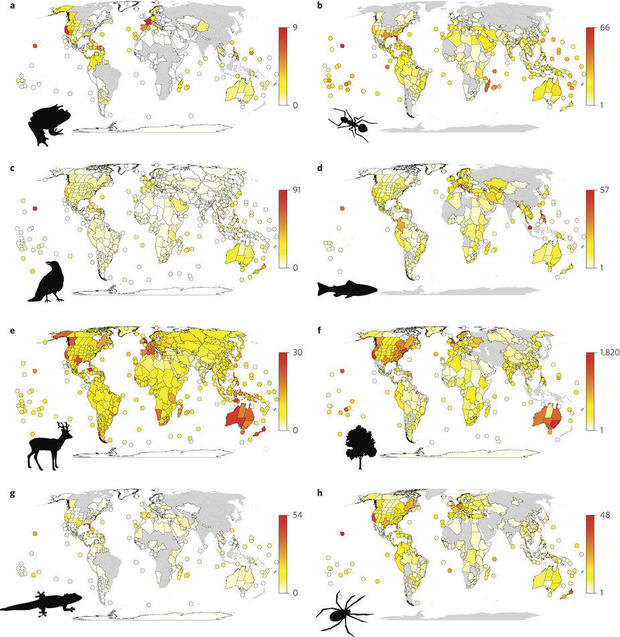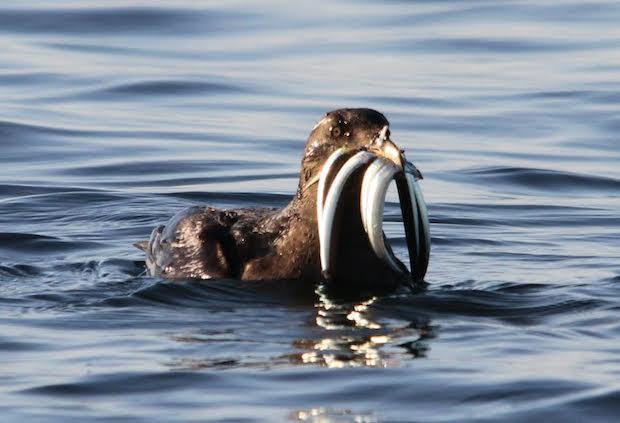These are the global hotspots for alien species
Alien species are a global problem, but they're a particular headache in certain hotspots of the world.
An alien species, in this context, is not a creature from outer space but an animal or plant introduced by humans outside of its natural area of distribution. A small but important number of alien species — an estimated 5 to 20 percent — become invasive, which means they pose a serious threat to biological diversity in their new environments, according to the International Union for Conservation of Nature.
The top three global hotspots for alien species are the Hawaiian Islands, New Zealand's North Island, and Indonesia's Lesser Sunda Islands, according to a new analysis of alien species across 186 islands and 423 mainland regions worldwide.
Invasive species are quiet (or not-so-quiet) forces behind countless environmental crises: in Guam, brown tree snakes have gobbled up nearly all the native birds; in the Atlantic, the lionfish is devouring massive volumes of other fish, including key commercial fish like snapper and grouper; in rivers and lakes across the midwestern U.S., the voracious Asian carp inhales plankton that native fish need to survive, thus unraveling the natural food chain.
Invasive species are the second most common threat associated with species that have disappeared from the earth, the IUCN estimates.
The international team of researchers shared their findings Monday in the journal Nature Ecology & Evolution, adding another layer to scientists' understanding of alien species in an increasingly interconnected, globalized world.
The top three "coldspots" — areas generally protected from alien species — are Antarctica, the Coral Sea Island Territory stretching between Australia and Asia, and the Laccadive Islands off the coast of India, the researchers found.
Islands and mainland coastal regions are generally hotbeds for alien species, the researchers wrote. They analyzed patterns and drivers of alien species across different taxonomic groups — amphibians, ants, birds, freshwater fishes, mammals, vascular plants, reptiles and spiders — arguing that "we lack a global picture of established alien species richness for multiple taxonomic groups."
The study highlighted the southern United States as a hotbed for alien species of ants and reptiles, particularly the state of Florida.
How do certain species bypass their natural biogeographic barriers and disrupt new ecosystems? Human transport is chiefly to blame, the researchers wrote. They predicted the number of alien species will only increase in a future of expanded global trade, urbanization, and climate change.
The researchers called for more aggressive measures to prevent the spread of alien species and their most threatening subset, invasive species.
The world's biggest agricultural producers, China and the United States, stand to lose the most from the threat of invasive species, according to a Stanford University study last year. These countries also represent the greatest potential sources of invasive species for the rest of the world.
Invading alien species cause approximately $120 billion in environmental damage and losses each year in the U.S. alone, according to Cornell University researchers.
"We need to be much better at trying to prevent the introduction of species that can be harmful in the first place," Dr. Wayne Dawson of Durham University told the BBC. "Prevention is better than cure with invasive species."







